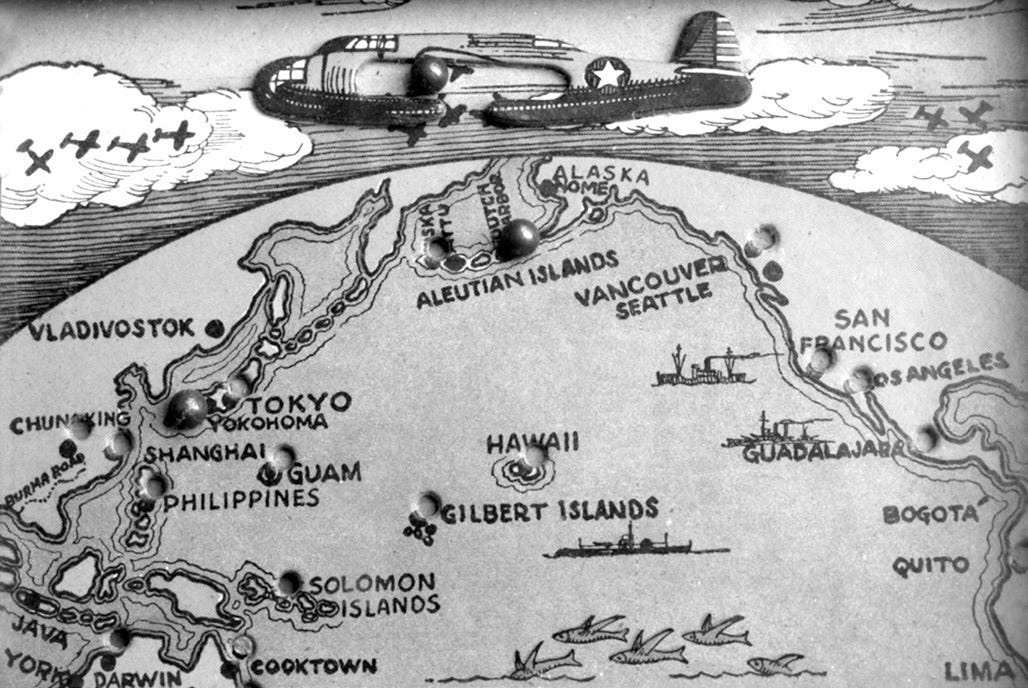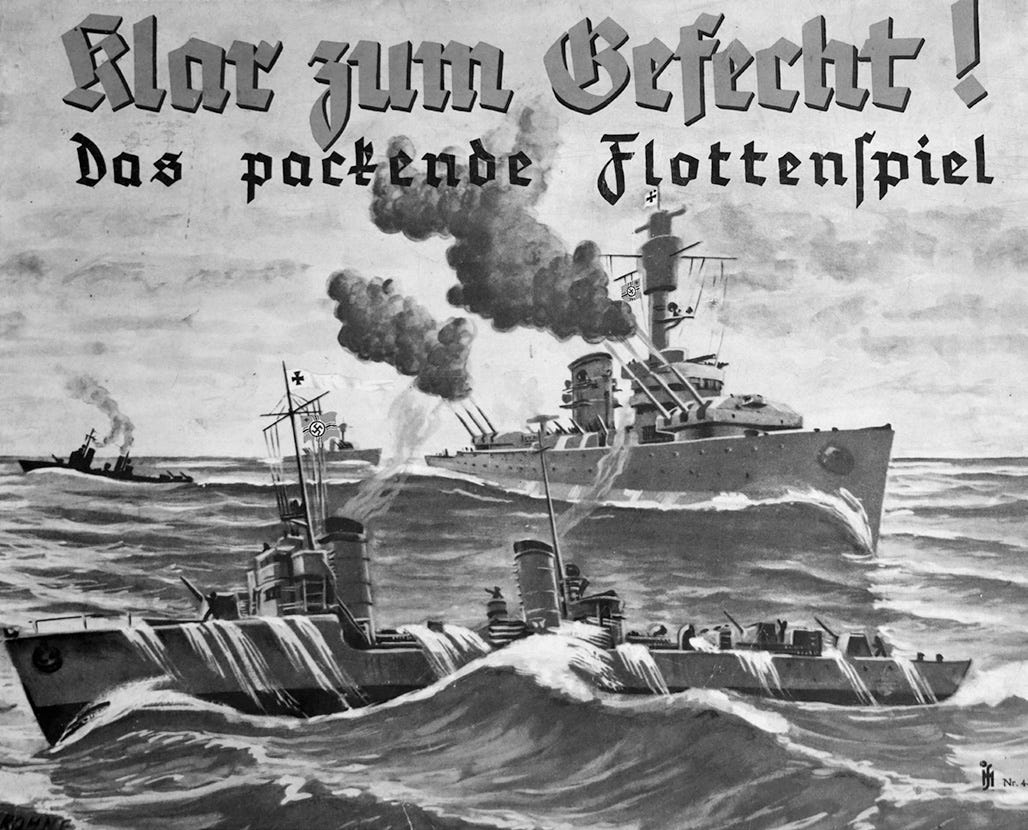'Children’s Propaganda Games'
A fascinating guide to popular games produced by German, British and American companies before and during the war

On the face of it, a book about children’s games is a very niche subject. Yet Children’s Propaganda Games of the Second World War: Playing and Collecting Nazi and Allied War Games is something of a revelation. We turn to contemporary accounts, letters, diaries, etc. to try to understand what people were thinking during the war - yet looking at the games they were playing gives us an equally valuable insight into the mindset of the time. When some of those games played a significant role in indoctrinating a young generation into the Nazi mindset, we can better understand the insidious nature of the brainwashing carried out at the behest of Hitler.
These games are not just of historical interest but are now valuable collector’s items, attracting high prices at auction.
The following excerpt comes from the introduction, together with a selection of images from the sixty-seven different games covered here:
From the start of the Second World War the young were central to the war effort on both sides, governments recruiting and training them in a wide variety of roles. In Britain this included working in factories and on the land, collecting scrap metal to recycle into aircraft, helping during air raids and joining the Scouts or Guides in their wartime duties. In Germany after 1939 it was the law for all boys and girls aged 10–14 to join either the Jungvolk (for boys) or Jungmädel (for girls) and when they were 14–18 years old the Hitler Jugend (Hitler Youth for boys) or the Bund Deutscher Mädel (League of German Girls).
All took part in Germany’s war, supporting and serving with the military and organising fundraising campaigns like the Winterhilfswerk des Deutschen Volkes (Winter Relief of the German People). Although America was not on the front line of the conflict like Britain and Germany, many young people did their patriotic duty by collecting scrap metal, saving their dimes to buy war bonds and helping manufacture ammunition, bombs and military vehicles.

Wartime propaganda aimed at the young took many forms from radio shows, books and badges to toys, films and magazines. These focused on all aspects of the war from rationing to recycling and evacuation to unexploded bombs. However, games held a special place in the mix because they were already hugely popular with families, many households having played them for generations. During the 1920s and 1930s the humble board, puzzle and card game had become a family staple, manufacturers producing an extraordinary variety of games about everything from bowling to climbing Everest and collecting stamps to gambling on horse racing. However, with the advent of the Second World War games manufacturers soon started producing war games to meet demand and at the prompting of governments. Despite their subject matter, most played down the realities of war, instead presenting the conflict as an exciting adventure. Many of the games encouraged children to ‘play their part’ but some had a far more sinister motive – to indoctrinate the young into hating the enemy.

The Nazis in particular prided themselves on producing games which promoted and glamourised war, Adolf Hitler famously writing in his autobiography Mein Kampf that ‘Whoever has the youth has the future’. They took war games to a new level by exploiting children’s patriotism and pride in Nazi conquests. While in theory the games required players to compete against ‘the enemy’, in fact the manufacturers cleverly rigged the rules to ensure that the Germans couldn’t lose. Despite the Nazis’ lack of fair play, Germany had a long and proud history of making competitive games dating back to the nineteenth century. The historic town of Nuremberg was at the heart of the German toys and games industry, many manufacturers there being Jewish. It was also the city chosen by Hitler to hold his huge rallies, the Reichsparteitag (Reich Party Day). So, when the Nazis came to power in 1933, they set about ‘Aryanising’ the games industry and driving out Jewish businesses.

One of the first games manufacturers they targeted was J.W. Spear & Sons. Founded in 1879, Jacob Wolf Spier anglicized his name to Spear to boost sales and hide his German Jewish roots. By the early 1930s the company had become hugely successful selling high-quality games internationally and was the largest games manufacturer in Germany. To meet the increasing demand for their products Spear & Sons opened up a subsidiary factory in Enfield, England in 1930. It proved not only an astute business move but also a life-saving one.

At the beginning of 1938 Spear & Sons consisted of two brothers, Richard and Hermann, who jointly ran the business. However, following Kristallnacht the Nazis forced the brothers to sell the business for a fraction of its worth to a German entrepreneur called Hanns Prost (1886–1984).1 As the company name was widely known throughout Germany, Prost initially decided to keep it but began manufacturing games which actively promoted Nazi ideology such as the naval game Kurs Ost-Nordost! (Course East-Northeast!). In response to the Nazis’ increasing hostility towards the Jewish community, Richard Spear emigrated to England and worked in their Enfield factory. However, his brother Hermann remained in Germany to oversee the transfer of the company and stay with his family. For his loyalty Hermann paid the ultimate price, being deported to Auschwitz and murdered there on 10 July 1943. In all, twelve members of the Spear family were murdered in concentration camps. After the war the company was returned to Richard and Hermann’s widow who continued to manufacture games but could never match their pre-war sales or popularity.
Most of the games produced in Germany during the war were aimed at the Jungvolk, also known as pimpfes. Using a programme of educational meetings, outdoor activities, parades and sports, Jungvolk were indoctrinated to see war as a way of life and a central tenant of Nazi ideology. Board games formed an important part of educating Jungvolk, especially when membership became compulsory in 1939. As members they were encouraged to play games like Bomber über England (Bomber over England), teaching them to destroy British cities including London, Liverpool, Birmingham and Newcastle. However, by the end of the conflict, war for many boys had stopped being a game and become a deadly reality, Jungvolk being drafted as child soldiers into the Hitler Youth and dying in the last-ditch defence of Germany.


Some of the most insidious games were designed to normalise the Nazis’ treatment of untermenschen or sub-humans. Juden Raus! (Jews Out!), produced in 1938, was a notorious game in which children were encouraged to round up Jews in a town and then put them outside the city walls before they were deported to Palestine. The game gave an early indication of the awful horrors that were to follow with the Holocaust. However, the British and Americans also produced some questionable games, particularly as the war progressed. In 1942 a game called Target for Tonight appeared in British toy shops which promoted the carpet bombing of Germany while in 1945 the Americans made an atomic bomb dexterity game that let players re-enact the nuclear bombing of Japan.


© Nicholas Milton 2024, ‘Children’s Propaganda Games of the Second World War: Playing and Collecting Nazi and Allied War Games'. Reproduced courtesy of Pen & Sword Publishers Ltd




Fascinating and Frightening as well